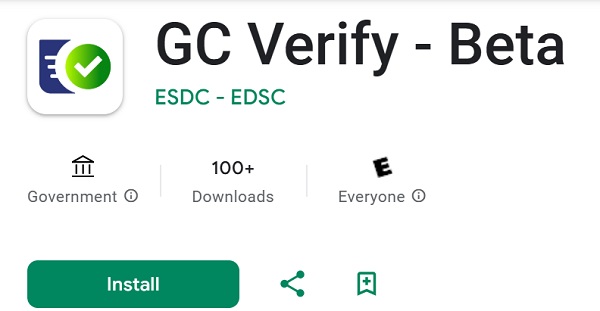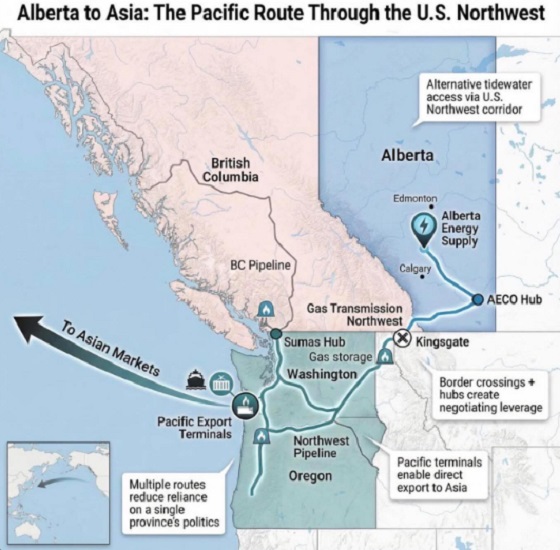Business
Business Spotlight – Calgary Entrepreneurs Bring The Gig Economy To Alberta

Gig work has been a popular subject as of late, interesting that younger generations of Albertans are up against a lot, including a historical economic downturn, a major decrease in unionized and salary jobs, competing with experienced furloughed workers and are simply left scratching their head after putting in thousands of hours and dollars to get a formal education. Combine that with an unemployment rate of 15.5% reported as of May 2020, up from 6.7% the same time last year, we are left with a pretty grim outlook for younger generations of Albertans.
What Is Gig Work?
Gig work can be referred to as self employed or simply contract, consulting or freelance work, where you as the service provider offer your skills at a preferred rate. This type of work is not new, but not only does it already consist of thousands of Canadian workers, Statistics Canada’s most recent data reported 1.7 million gig workers in Canada in 2016. Not the security we were taught to seek in our youth, but can offer a new level of freedom for those who wish to choose their work schedule, offer their skillset and grow their own personal brand.

Source: The Accelerator – From Left: CEO, Karshil Desai, CCO, Sara Mir, CSO, Shawn Moghaddami and CMO, Ankit Patel.
Incredible Minds Can Do Incredible Things
Meet the Skilli team, a group of four like minded entrepreneurs collaborating to bring the gig economy to Alberta. Having worked in Fort McMurray in Alberta, they experienced the extent of what ‘hard work’ means for our citizens while spending time working in the Alberta Oil and Gas industry. Respect to the many hard working individuals who have overcome fires and floods in that area over the last number of years, their community resilience is inspirational. CEO Karshil Desai speaks about witnessing an opportunity while living there that would prove to be the foundation for Skilli:
“…working in software and automation in the oil and gas sector in Fort MacMurray, I was around a lot of people who made good money offering their unique skills and services…due to the economic downturn, it was unfortunate to see so many people getting laid off, but still needed to pay their bills…I noticed a huge gap in how skilled services were offered and how they were hired by the consumer..”
Skilli is a mobile platform that provides freelancers, contractors and service providers a place to market themselves as their own brand. There can be many challenges with traditional methods of gig work, such as finding who can provide the service you need, getting their contact details, scheduling the service, quality control of the work and invoicing for payment after the fact. I am sure there has been millions of dollars spent from word of mouth referrals for what was actually a poor quality deliverable on too many occasions. Validation is a crucial part of the Skilli process for those offering their service, as part of that process, they put the service provider first, thus providing the highest level of customer satisfaction to the end user. CSO for Skilli, Shawn Moghaddami mentions:
“…we see the value of the gig economy in Alberta, with such a large talented workforce here…for us, it is ultimately about putting the service provider first so the customer is the one that benefits…we provide the tools they need, they have the platform behind them and the support to build their own brand.”
The Skilli App You Need To Watch Out For
Combining passion to help a wider community, their experience around contract work and their education on the gig economy, the team have developed their app where the platform can be utilized from anywhere. As mentioned, this type of self employment can offer a higher level of freedom than the traditional 40 hour nine-to-five. Work for yourself and lean on their knowledge base for resources on how to establish your profile, process payments, professional validation and build your confidence as a freelancer or contractor. Unfortunately the app is not available yet in Alberta, however they are proactively validating service providers for the launch of their newest version in early July. There is hope for those who can offer services and are having difficulty finding employment. Something we can all look forward to in these trying times.

Invest In Yourself
Want to be a part of what will be established as the ‘new economy’? Now is the time to re-evaluate the value you possess. Take a course, improve your skills, invest in supplies you need to offer a service as an individual or begin to construct a portfolio of previous work. Contract work has been around for a very long time, the stigma of it not being a successful career choice for your whole life is dying. Take control of your future by working for yourself. The gig economy is here and will continue to become a major part of what we call the ‘new normal’, to that point everyone here at Todayville wishes the Skilli team the best of success with the launch of their new app and look forward to their launch in early July.
Considering becoming a service provider or seeking information?
If you would like to learn more about Skilli or their new app. Visit their website here or social media links below.

For more stories, visit Todayville Calgary
Alberta
A Christmas wish list for health-care reform

From the Fraser Institute
By Nadeem Esmail and Mackenzie Moir
It’s an exciting time in Canadian health-care policy. But even the slew of new reforms in Alberta only go part of the way to using all the policy tools employed by high performing universal health-care systems.
For 2026, for the sake of Canadian patients, let’s hope Alberta stays the path on changes to how hospitals are paid and allowing some private purchases of health care, and that other provinces start to catch up.
While Alberta’s new reforms were welcome news this year, it’s clear Canada’s health-care system continued to struggle. Canadians were reminded by our annual comparison of health care systems that they pay for one of the developed world’s most expensive universal health-care systems, yet have some of the fewest physicians and hospital beds, while waiting in some of the longest queues.
And speaking of queues, wait times across Canada for non-emergency care reached the second-highest level ever measured at 28.6 weeks from general practitioner referral to actual treatment. That’s more than triple the wait of the early 1990s despite decades of government promises and spending commitments. Other work found that at least 23,746 patients died while waiting for care, and nearly 1.3 million Canadians left our overcrowded emergency rooms without being treated.
At least one province has shown a genuine willingness to do something about these problems.
The Smith government in Alberta announced early in the year that it would move towards paying hospitals per-patient treated as opposed to a fixed annual budget, a policy approach that Quebec has been working on for years. Albertans will also soon be able purchase, at least in a limited way, some diagnostic and surgical services for themselves, which is again already possible in Quebec. Alberta has also gone a step further by allowing physicians to work in both public and private settings.
While controversial in Canada, these approaches simply mirror what is being done in all of the developed world’s top-performing universal health-care systems. Australia, the Netherlands, Germany and Switzerland all pay their hospitals per patient treated, and allow patients the opportunity to purchase care privately if they wish. They all also have better and faster universally accessible health care than Canada’s provinces provide, while spending a little more (Switzerland) or less (Australia, Germany, the Netherlands) than we do.
While these reforms are clearly a step in the right direction, there’s more to be done.
Even if we include Alberta’s reforms, these countries still do some very important things differently.
Critically, all of these countries expect patients to pay a small amount for their universally accessible services. The reasoning is straightforward: we all spend our own money more carefully than we spend someone else’s, and patients will make more informed decisions about when and where it’s best to access the health-care system when they have to pay a little out of pocket.
The evidence around this policy is clear—with appropriate safeguards to protect the very ill and exemptions for lower-income and other vulnerable populations, the demand for outpatient healthcare services falls, reducing delays and freeing up resources for others.
Charging patients even small amounts for care would of course violate the Canada Health Act, but it would also emulate the approach of 100 per cent of the developed world’s top-performing health-care systems. In this case, violating outdated federal policy means better universal health care for Canadians.
These top-performing countries also see the private sector and innovative entrepreneurs as partners in delivering universal health care. A relationship that is far different from the limited individual contracts some provinces have with private clinics and surgical centres to provide care in Canada. In these other countries, even full-service hospitals are operated by private providers. Importantly, partnering with innovative private providers, even hospitals, to deliver universal health care does not violate the Canada Health Act.
So, while Alberta has made strides this past year moving towards the well-established higher performance policy approach followed elsewhere, the Smith government remains at least a couple steps short of truly adopting a more Australian or European approach for health care. And other provinces have yet to even get to where Alberta will soon be.
Let’s hope in 2026 that Alberta keeps moving towards a truly world class universal health-care experience for patients, and that the other provinces catch up.
Business
Warning Canada: China’s Economic Miracle Was Built on Mass Displacement

If you think the CCP will treat foreigners better than its own people, when it extends its power over you, please think again: Dimon Liu’s warning to Canadian Parliament.
Editor’s Note: The Bureau is publishing the following testimony to Canada’s House of Commons committee on International Human Rights from Dimon Liu, a China-born, Washington, D.C.-based democracy advocate who testified in Parliament on December 8, 2025, about the human cost of China’s economic rise. Submitted to The Bureau as an op-ed, Liu’s testimony argues that the Canadian government should tighten scrutiny of high-risk trade and investment, and ensure Canada’s foreign policy does not inadvertently reward coercion. Liu also warns that the Chinese Communist Party could gain leverage over Canadians and treat them as it has done to its own subjugated population—an implied message to Prime Minister Mark Carney, who has pledged to engage China as a strategic partner without making that position clear to Canadians during his election campaign.
OTTAWA — It is an honor to speak before you at the Canadian Parliament.
My testimony will attempt to explain why China’s economic success is built on the backs of the largest number of displaced persons in human history.
It is estimated that these displaced individuals range between 300 to 400 million — it is equivalent to the total population of the United States being uprooted and forced to relocate. These displaced persons are invisible to the world, their sufferings unnoticed, their plights ignored.
In 1978, when economic reform began, China’s GDP was $150 billion USD.
In 2000, when China joined the WTO, it was approximately $1.2 trillion USD.
China’s current GDP is approximately $18 trillion USD.
In 2000 China’s manufacturing output was smaller than Italy’s.
Today it’s larger than America, Europe, Japan, and South Korea combined.
If you have ever wondered how China managed to grow so fast in such a short time, Charles Li, former CEO of the Hong Kong Stock Exchange, has the answers for you.
He listed 4 reasons: 1) cheapest land, 2) cheapest labor, 3) cheapest capital, and 4) disregard of environmental costs.
“The cheapest land” because the CCP government took the land from the farmers at little to no compensation.
“The cheapest labor,” because these farmers, without land to farm, were forced to find work in urban areas at very low wages.
The communist household registration system (hukou 戶口) ties them perpetually to the rural areas. This means they are not legal residents, and cannot receive social benefits that legal urban residents are entitled. They could be evicted at any time.
One well known incident of eviction occurred in November 2017. Cai Qi, now the second most powerful man in China after Xi Jinping, was a municipal official in Beijing. He evicted tens of thousands into Beijing’s harsh winter, with only days, or just moments of notice. Cai Qi made famous a term, “low-end population” (低端人口), and exposed CCP’s contempt of rural migrants it treats as second class citizens.
These displaced migrant workers have one tradition they hold dear — it is to reunite with their families during the Chinese Lunar New Year holiday, making this seasonal migration of 100 to 150 million people a spectacular event. In China’s economic winter of 2025 with waves of bankruptcies and factory closures, the tide of unemployed migrant workers returning home to where there is also no work, and no land to farm, has become a worrisome event.
Historically in the last 2,000 years, social instability has caused the collapse of many ruling regimes in China.
“The cheapest capital” is acquired through predatory banking practices, and through the stock markets, first to rake in the savings of the Chinese people; and later international investments by listing opaque, and state owned enterprises in leading stock markets around the world.
“A disregard of environmental costs” is a hallmark of China’s industrialization. The land is poisoned, so is the water; and China produces one-third of all global greenhouse gases.
Chinese Communist officials often laud their system as superior. The essayist Qin Hui has written that the Chinese communist government enjoys a human rights abuse advantage. This is true. By abusing its own people so brutally, the CCP regime has created an image of success, which will prove to be a mirage.
If you think the CCP will treat foreigners better than its own people, when it extends its power over you, please think again.
The Bureau is a reader-supported publication.
To receive new posts and support my work, consider becoming a free or paid subscriber.
-

 Alberta1 day ago
Alberta1 day agoAlberta Next Panel calls to reform how Canada works
-

 Automotive2 days ago
Automotive2 days agoCanada’s EV gamble is starting to backfire
-

 International6 hours ago
International6 hours agoGeorgia county admits illegally certifying 315k ballots in 2020 presidential election
-

 Digital ID23 hours ago
Digital ID23 hours agoCanadian government launches trial version of digital ID for certain licenses, permits
-

 Business23 hours ago
Business23 hours agoThe “Disruptor-in-Chief” places Canada in the crosshairs
-

 Agriculture1 day ago
Agriculture1 day agoEnd Supply Management—For the Sake of Canadian Consumers
-

 Alberta6 hours ago
Alberta6 hours agoCalgary’s new city council votes to ban foreign flags at government buildings
-

 Alberta10 hours ago
Alberta10 hours agoWhat are the odds of a pipeline through the American Pacific Northwest






